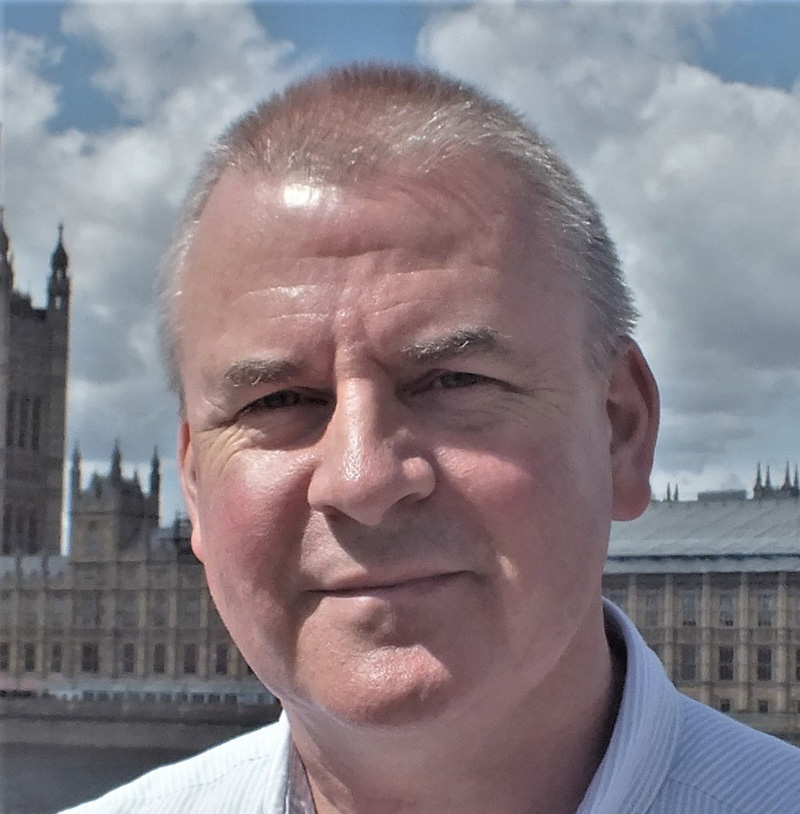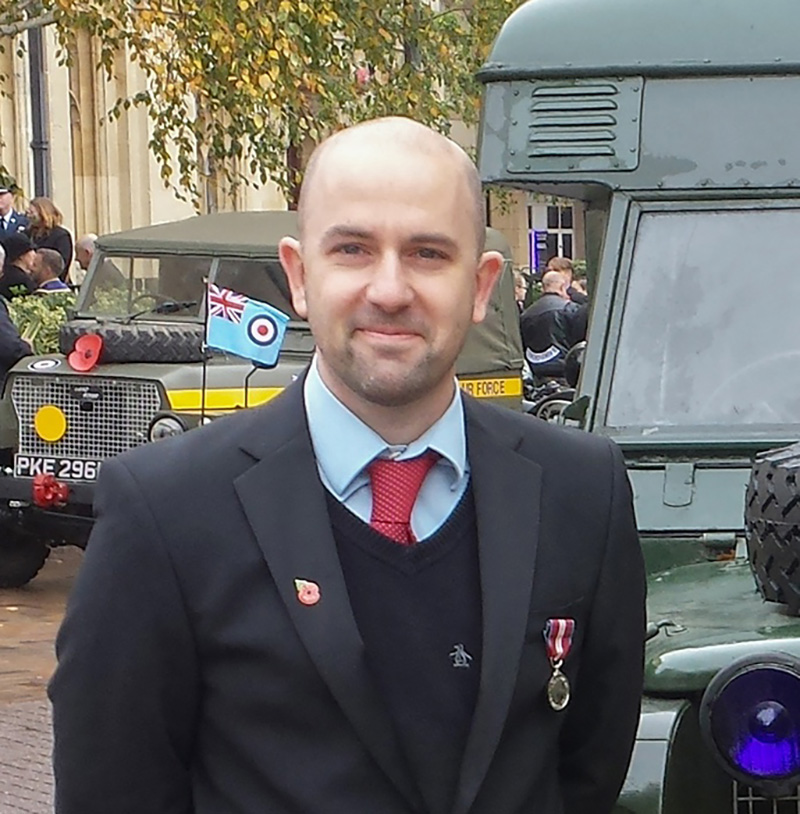Meet the Team
The DIF have worked with the Professional Associations Research Network to plan for our current and future approach to Governance.
With strong support from the heritage sector, an Advisory Board (DIFAB) was formed. DIFAB comprises National Heritage Stakeholder Bodies and Detectorist Members, with the intention of increasing the number of Detectorist Members from the new intake of DIF Members.
The proposal to establish the DIF, a body dedicated to archaeology-focused research and education for detectorists, was first presented to Historic England by Keith Westcott in early 2017.
Keith Westcott, Founder and CEO of the DIF, volunteered as a technical expert for decades. He is a Fellow of the Institute of Leadership and was awarded the Freedom of the City of London in 2012. As a former Chair of the British Standards Institute in the Heating and Energy Sector, he served as Principal Expert representing the UK in the EU. With 30 years of experience as a detectorist and as the Detectorist Team Manager for Time Team, Keith transitioned from wreck diving to metal detecting, driven by a passion for historical research initially sparked by shipwreck investigations. His notable discovery of the Civil War Broughton Castle Hoard, linked to Queen Henrietta Maria, was the last case in 1000 years of Common Law Treasure Trove and was exhibited at the Ashmolean Museum in Oxford for over a decade. Keith’s dedication to his hypotheses led to his groundbreaking discovery and the subsequent uncovering of one of Britain’s largest Roman villas, providing key insights into Roman Britain.
Keith Westcott BioDIF Advisory Board (DIFAB): Chair – Pete Hinton, recently retired as CEO Chartered Institute for Archaeologists.
All-Party Parliamentary Archaeology Group
The National Trust
The Crown Estate
Chartered Institute for Archaeologists
Forestry England
The Association of Local Government Archaeological Officer’s
Council for British Archaeology
Federation of Archaeological Managers and Employers
National Farmers Union
Country Land and Business Association
Institute of Conservation
Operation Nightingale
British Association for Local History
The Battlefields Trust.
Historic England (Observers)
Detectorist DIFAB Members:

Tom Redmayne – DIFAB Vice-Chair
My name is Tom Redmayne, a metal-detectorist, small finds researcher and self-recorder for the PAS, now retired from my long-term job as commercial manager for a national food company. I grew up on a dairy farm in Lancashire so have always had an attachment to the land and its history. I started metal-detecting in 2005 when I moved to Lincolnshire and, after making my first few interesting finds, I discovered the PAS and its work recording finds and acting as a bridge between metal detecting and archaeology.
The whole ethos of recording to the most accurate find spot and with the most accurate description was something that fit well with my own views.
Researching my finds and their contexts soon led to me identifying most of my own finds and offering a detailed description with full coordinates before handing them in to my local FLO for recording so, in November 2010 I was set up as a self-recorder.
In 2013 I began to study and classify a type of medieval buckle called a ‘disc-on-pin’ type. My research and classification were published as Find Research Group Datasheet 47 in 2015.
I am currently researching a unique type of lead pilgrim’s ampulla and hope to have my findings published in the near future.
My experiences so far have shown that the relationship between metal detecting and archaeology is certainly a two-way interaction with both disciplines having much to offer the other. I see it as essential to the future of responsible metal detecting in the UK to build on, and grow, this relationship for the benefit of all stakeholders involved.

Alix Smith
I have been an amateur archaeologist for over 15 years, working on digs first in Surrey, and now in Wiltshire, where I live in a small village just outside Salisbury. I took up metal-detecting approximately five years ago, and quickly realised the value of accurate recording, so joined Salisbury Museum as a volunteer for the Portable Antiquities Scheme. As part of the PAS I have done various British Museum courses and workshops on identifying and recording pottery, heraldry, metalwork, small finds and, my principle interest, numismatics.
My main goal has always been to promote the use of metal-detecting as a complement to other archaeological tools, particularly during digs, and I have worked as the detectorist on commercial, university and private excavations to demonstrate this in practice. Last year I took up the position of Finds Liaison Assistant for Wiltshire with the PAS, enabling me to further develop the relationship between detectorists and archaeologists by promoting the importance of responsible detecting, reporting finds and recording findspots. In my work I liaise directly with individual detectorists, clubs, archaeologists, museum staff and Finds Liaison Officers. In addition, I have given local talks, led student classes and published papers on metal-detecting and numismatics.
The reason I became part of the IoD is because the idea of providing various educational opportunities for all detectorists really appeals to me. I love the history and heritage of Britain, and believe it is important to preserve it in careful records as best we can for all who come after us. The PAS is integral to this, but so are detectorists who understand the responsibility we have to share the knowledge and beauty we uncover.

Nathan Portlock-Allan
I’ve been an amateur historian and archaeologist for the last 15 years – I have a special interest in Roman and Post-Roman archaeology and have taken part in various Roman digs both in Oxfordshire and North East Somerset. I started metal-detecting around eight years ago to compliment my interest in the discipline. Having entered metal-detecting already knowing the importance of the context of historical finds, I started to realise the importance of accurate recording and description.
In my working life, I am a professional photographer and a historical documentary filmmaker. I am very lucky to be able to frequently work within my field of interest and use these skills as part of my own research and recording.
I am a great advocate of the promotion of responsible metal-detecting and the education of others in the significance of accurate recording with both PAS and other official bodies. It is becoming increasingly useful for trained metal-detectorists to work alongside archaeologists and add to the historical record using both fieldwalking and detecting.
I look forward to being able to help educate and promote this relationship between archaeology and metal-detecting and bringing about a change in how this fast-growing hobby is viewed.

Alistair Mckensie
I have been a volunteer archaeologist and detectorist for over 14 years, beginning with my involvement in the excavations surrounding the 500th anniversary of the battle of Flodden.
This extensive four-year investigation was pivotal in shaping my interest, as it utilized metal detecting as a key tool for locating buried artefacts to guide the archaeologists to areas of the battlefield which required further investigation, in a similar way to the use of geophysical survey.
I witnessed first hand the potential of metal detecting in archaeological research and its value in providing vital context to historical sites, and I feel that it has perhaps been under-utilised in the past.
In recent years, I have expanded my knowledge to include geophysical survey and advanced mapping and modelling systems, including RTK GNSS recording and photogrammetry using both cameras and drones. These technologies provide precise and detailed data to complement traditional excavation techniques.
I am a strong advocate for responsible metal detecting and believe in the importance of accurate recording and collaboration with the archaeology community. By combining these modern tools with fieldwork, we can make new discoveries and better preserve historical sites and contribute valuable information to the archaeological record.
I look forward, as part of DIF, to promoting cooperation between archaeologists, detectorists and landowners, and to encourage the use of emerging technologies in the study of the past.

Jonathon Brooks
Jonathan Brooks is a detecting practitioner with over 16 years of experience across eleven counties. A supporter of the Portable Antiquities Scheme, he has over 2,500 artefacts registered to date. He has finds held at the British Museum, Norwich Castle and Hampshire Cultural Trust Museums and published in Finds Identified – Leahy/Lewis and the WANHM Yearbook 2018, 2019, 2020 amongst others. His own methodical research has resulted in multiple hoards and previously unrecorded Roman and medieval fayre sites discovered. His commercial clients have included AC Archaeology, TAP and Wessex Archaeology where he assembled and led a team on a two week Battlefield survey. He also was the technical adviser on the TV series Detectorists, appearing in two episodes. He also provides bespoke training for private clients. His outreach activities include Festival of Archaeology, Harnham (Moffat), where he was the designated detectorist; detectorist at the Friends of Clarendon excavation; and the magnetometer survey and recovery of a hoard with Avon Valley Archaeological Society; and he gives talks on his finds.
Academic collaborations include site detectorist for Southampton and Swansea Universities, Old Sarum Landscape project excavations and the Cardiff University (DR) detecting survey at Teffont and Coombe Bissett. He has completed the Metal Detecting for Archaeological Projects, CiFA approved course, Oxford University.
As a site volunteer he has experience of excavation, finds processing, recording, photography (including Macro) and has courses booked on pottery and animal bone identification and finds preservation. He is also learning how to conduct a Magnetometer survey to aid his own research.
Jonathan’s challenge to the inconsistency in how the Treasure act was being applied led to the improved definition that a single coin can now be classed as Treasure. He firmly believes that a national standard of detecting needs to be applied to all developer funded Archaeology.